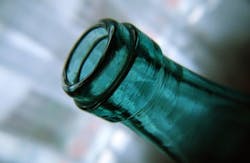The total production value over the first two quarters increased by 1.9 percent, which adds to the positive trend from last year, highlighting the resilience and stability of the sector in a year when many manufacturing industries were hit by the financial crisis and economic turmoil in Europe.
According to FEVE, the total production output of the container glass industry in the European Union, plus Switzerland and Turkey, for the first half of 2012 came in at 10.9 million tons of glass, up from 10.7 million tons for the same period last year. Several countries reported significant growth, multiple times above the average growth rate, including Portugal, with a 13 percent rise, Turkey, whose output went up 8.3 percent, Poland, with a 7 percent increase, North & Central Europe, at 6.2 percent, and South & East Europe, at 5.1 percent.
At the other end of the scale there were countries like the United Kingdom, Germany and Spain, which saw more modest growth rates of 2.9 percent, 1.4 percent and one percent, respectively. FEVE noted, however, that those figures compare against a very solid increase in production last year.
Germany remains the biggest producer of container glass, accounting for 18% of the total European production, with almost two million tons over the first six months of the year, followed by Italy and France, with 1.7 million tons and 1.6 million tons, respectively.
According to FEVE, the growth registered in the first half of the year is encouraging, but the sector has also suffered from the financial crisis, which has harmed the competitiveness of the industry in the European Union. Other factors like changes in CO2 costs, rising energy prices, unstable exchange rates and high labor costs have also affected the competitiveness of the container glass sector globally. The combined effect of all those factors leads to a delay in investment decisions, especially for long-term investments, and provides an incentive for R&D investments to be made in locations outside the EU, where production costs are lower.
Meanwhile, the European Commission has identified the manufacturing sector as one of the focal points for EU growth. As Europe accounts for almost a third of global consumption, it is important to keep boosting the EU manufacturing sector, said FEVE. Its president Stefan Jaenecke commented that the container glass industry is looking at ways to innovate and stay competitive while meeting demand for high-quality products. In order to achieve its goals, the industry needs support in the form of a legislative and economic framework that can facilitate long-term growth and sustainability, Jaenecke concluded.
